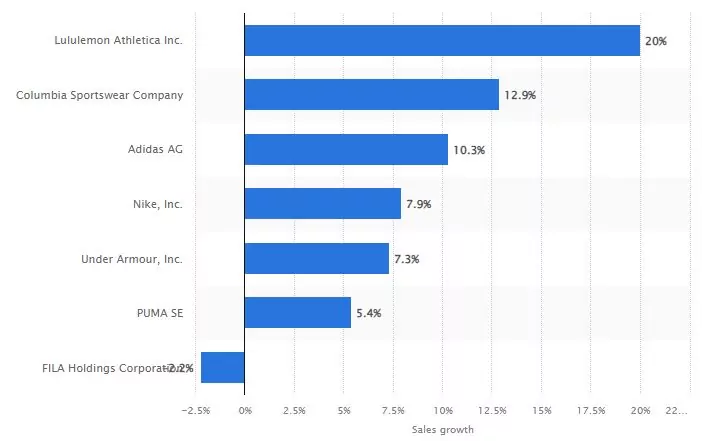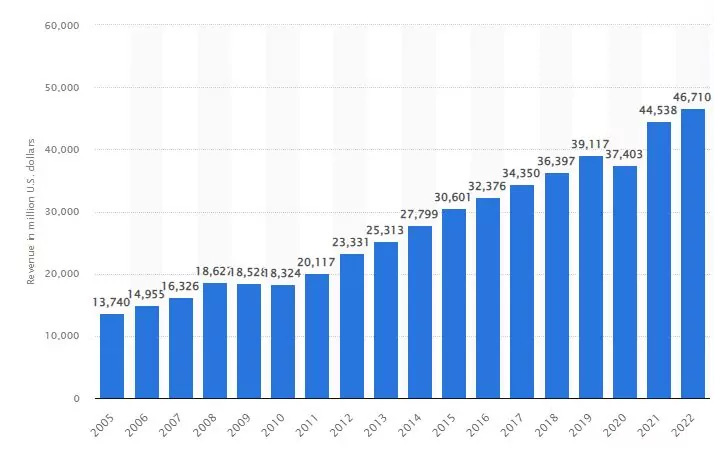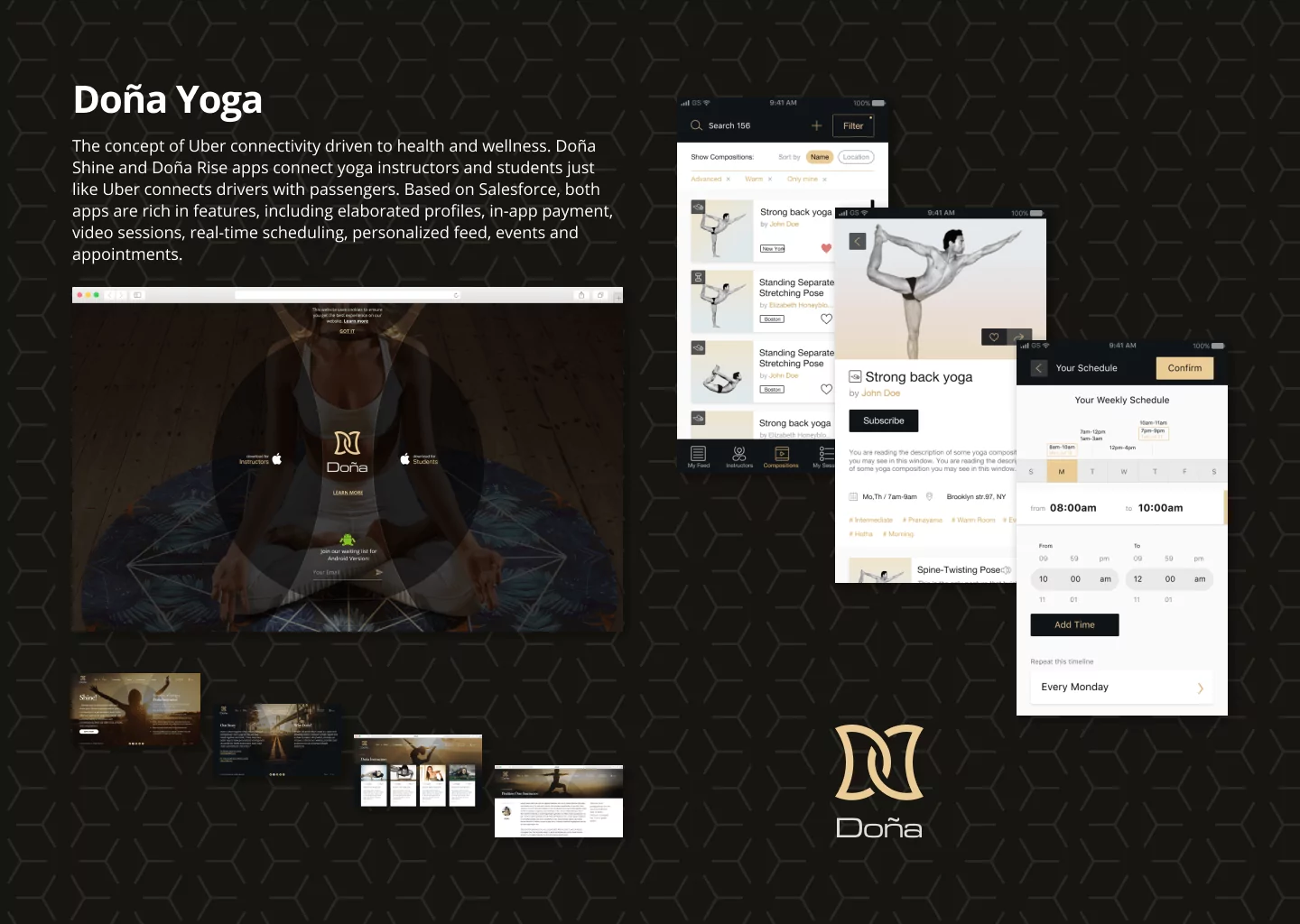Modern technologies such as IoT, AI and VR have a profound impact on sports and fitness. Following a short slowdown in 2020 due to the pandemic, these technologies played a major role in revitalizing the industry. Examples of using technologies in sport include telefitness solutions for home workouts, mobile apps for weight management, personal wearables, and performance tracking systems.
In this post, we will review these and other key applications in this field, go through the advancements in sports technology, and mention a few amazing digital products that thrive in this industry. We will answer the following questions:
- How does technology affect sports?
- What technologies have the biggest impact on the industry?
- How do modern brands leverage AI, IoT and cloud computing in sport and fitness to have a leg on the competition?

Digital technology revolutionized the way companies operate and adjust to the needs and expectations of modern customers. According to McKinsey, since the pandemic, consumers around the world have shifted priorities toward healthier lifestyles and are willing to pay more for services and products that promote wellness, including fitness, appearance, and health. To stay competitive and win in this market, companies reshape their strategies by using digital technologies in sports and fitness.
Digitalization has become a key focus for companies seeking growth and innovation. The leading players in the industry, from professional athletes and leagues to private fitness clubs, apparel and gear producers, and event organizers experiment and successfully leverage the benefits of technology in sports to gain competitive advantage. Among the top performers in 2022 that showed significant sales growth are the brands that invest heavily in innovation and tech.

Top sales growth in 2022. Image credit: Statista.
Nike and Peloton are real-world examples that show how a company can boost sales and enhance brand image by embracing digital technologies. Nike has successfully integrated technology into its products, such as connected shoes and smart apparel, providing users with real-time performance data and personalized coaching. As you can see, except for a slight drop in 2020, Nike nearly doubled its worldwide revenue in the course of 10 years, showing steady growth from year to year.

Nike worldwide revenue. Image credit: Statista.
Peloton, on the other hand, has leveraged the use of IoT and AI in fitness to create immersive at-home experiences, combining interactive workouts with social engagement. The company founded in 2012 hit the revenue goal of nearly 3.15 billion USD in 2021. It quickly became an icon, demonstrating the impact of technology on fitness industry.
So how is technology used in sports today and what should we expect from sports and fitness applications in the nearest future? Let’s find out!
No doubt, the major trends in fast-growing tech such as IoT, artificial intelligence, and virtual reality have made a big impact on the industry of sport and fitness. Along with now common fitness trackers and mobile apps for different sports activities, we see novel technologies in sports being tested and adopted. Examples are abundant.
Here are several interesting applications of using information technology in fitness, professional sports, and wellness.
Telefitness technologies
The new reality of the home office has boosted the role of digital technology in sports and fitness. Particularly, telefitness and all sports technology advancements that make home workouts and remote coaching possible. This category also includes a wide range of solutions from popular video conferencing tools and mobile apps for instructors and students to futuristic fitness technologies like smart mirrors.
The best thing about these technologies is that they are likely to stay with us for a very long time. Telefitness services are particularly important for such groups of consumers as the elderly, people who recover from injuries and those who can’t access gyms or find it challenging to work out outside for other reasons. There are plenty of health and wellness applications in this area that have proven to be useful, especially in recent years.
Doña Rise and Doña Shine is a great example of a feature-rich telefitness app. This is a unique app combo for home training with fitness and yoga instructors and workout progress tracking on wearables and mobile. Just like an Uber for fitness and wellness, the apps allow instructors to sell their services on-demand online and help students find instructors and routines that best fit their interests and schedules.

Need help with your sports app?
We can transform your idea into a stunning award-worthy application that performs like an A-list athlete.
Wearables for sports and fitness
The time when wearables in sports and wellness have been associated only with Fitbit bands and basic pedometers has passed. Today, the variety of wearable products and the versatility of their functionality are astonishing.
There are smart glasses for cyclists that build and show routes in real-time and goggles for swimmers that collect important metrics on the go. Sensor-enabled shoes for football players and runners that track speed, force, motion, traction, and other parameters have already become common examples of the use of technology in sports. There are even full-body suits that enable performance and muscle coordination monitoring during training and help enhance the experience with different AR and VR effects. These wearables are suitable for professional athletes, hobbyists, as well as those who undergo rehabilitation after traumas.
However, one of the most prominent examples in this category is perhaps the ultimate sensor wearable, the winner of uncountable CES and Red Dot awards, Teslasuit. Not only can it expand the potential of an athlete’s training thanks to the haptic tech, immersive VR experience and unique telemetry analytics. It also works as a tool for post-injury rehabilitation.

Read: Wearable application development for smart earbuds
Internet of Things and 5G
Emerging 5G technologies and the wide adoption of IoT in sports and fitness impact this industry in many different perspectives. Wearables are just a tiny part of connected technology, whereas the opportunities Internet of Things and ultrafast connectivity bring to this sector are truly fantastic.
Large-scale infrastructures such as connected stadiums, immersive audience experiences based on VR/AR solutions, athlete performance tracking and analytics are some of the most outstanding examples of digitalization in sports. It is believed that these technologies will become the major drivers of digital transformation in sports in the future.
Smart workout equipment
Equipment is often the main focus of sports startups. We can observe the growth of technology in sports equipment we use today. When common workout equipment such as treadmills or dumbbells are enhanced with sensors, they become a source of unique performance data and help monitor and correct workout routines in real time, enhance efficiency and even avoid injuries. Peloton treadmills and bikes are some of the most popular examples of fitness IoT applications and smart digital technology used in sports.

Connected gear
Smart suits, glasses, helmets, golf clubs, etc. have already become a part of essential gear kits of professional athletes. These tools provide professional sportsmen and sportswomen as well as their coaching teams with essential insights important for building efficient training programs and strategies.
Solos glasses is an excellent illustration of using connected digital technology in sports. This product offers an impressive array of features catering to professional cyclists and runners. These glasses provide monitoring capabilities, route navigation assistance, performance measurement tools, and advanced analytics.

Enhanced sports facilities
The impact of technology in sports is seen not only in athletes’ training and performance but also in the conditions of the sports environment. Largescale facilities including stadiums, racing tracks, skating rinks are not easy and certainly not cheap to maintain. Enhanced with sensors, electricity management systems and lighting control, these facilities turn into smarter and more sustainable spaces that provide athletes and audiences with excellent conditions for sports events.
Athlete tracking systems
How has technology impacted sports? Possibly, the best way to answer this question is to compare the performance of the athletes today and 20 years ago. One of the key reasons why athletes excel and make incredible leaps, literally in some cases, is the real data they use to adjust their training and game strategies.
Sports teams track and analyze performance data, determine opportunities, detect weak points, tune training programs and, eventually, achieve their goals. This is why athlete tracking platforms like STATSports are gaining popularity (Manchester United, Liverpool, Arsenal and other major football clubs use this platform).
